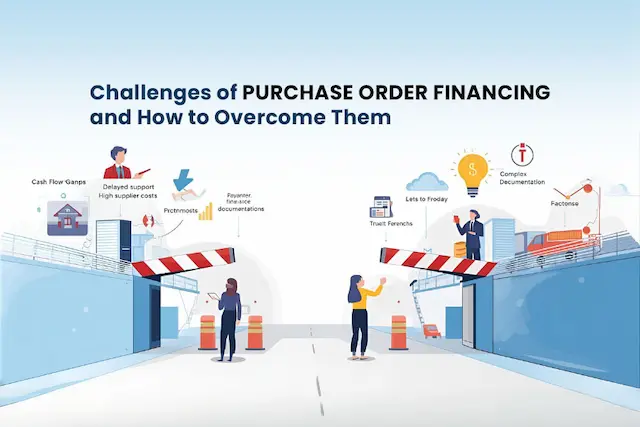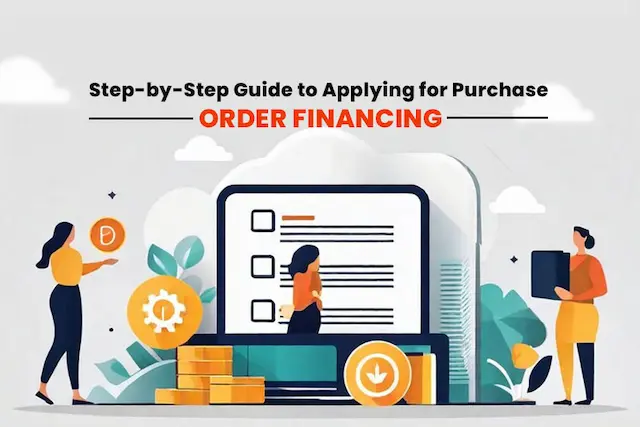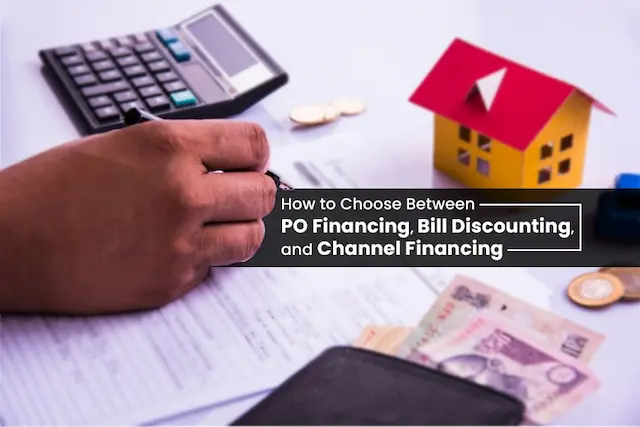In the landscape of trade finance, understanding the collaborative tuning between different tools is key to leveraging their combined potential. In the trade finance world, think of these financial tools like puzzle pieces fitting together. Each piece does something important on its own, but it’s when they work together that you get the full picture. Factoring and purchase order financing are like dynamic duos.
Let’s unravel the intricacies of factoring, purchase order financing, and how they seamlessly come together to offer a comprehensive solution.
About Invoice Factoring
Factoring is a financial arrangement where a business sells its accounts receivable (unpaid invoices) to a third party, known as a factor, at a discount. Instead of waiting for customers to pay their invoices, the business gets immediate cash from the factor. The factor then collects the full amount owed from the customers directly.
Here’s a simple breakdown:
Invoice Submission: The business completes a sale and issues an invoice to the customer for the products or services.
Factor Advances Cash: Rather than waiting for the customer to pay, the business sells the invoice to the factor. The factor pays the business a certain percentage (advance rate) of the invoice value upfront.
Customer Payment: The factor takes over the responsibility of collecting payment from the customer when the invoice is due. The customer pays the full invoice amount to the factor.
Factor Deductions: The factor deducts its fees, including the discount it applied when advancing the cash, and remits the remaining balance to the business.
Factoring helps businesses improve cash flow, especially when waiting for customer payments could cause financial strain. It also offloads the responsibility of collecting payments, allowing the business to focus on its core operations.
About PO Financing

Purchase Order (PO) Financing is a type of funding that helps businesses fulfill customer orders, especially when facing cash flow constraints.
Here’s a simple overview:
Confirmed Purchase Order: The process begins when a business receives a confirmed purchase order from a customer. This order outlines the products or services the customer wants and the agreed-upon terms.
Financial Gap: To fulfill the order, the business needs funds for manufacturing, production, or other related costs. However, if the business doesn’t have enough cash on hand, it might struggle to meet these expenses.
PO Financing Steps In: Purchase Order Financing comes into play. A financial institution or lender provides funds to the business based on the confirmed purchase order. This allows the business to cover the costs associated with fulfilling the order.
Order Fulfillment: With the injected funds, the business can proceed to manufacture or acquire the products, fulfill the order, and prepare it for delivery to the customer.
Invoice Generation: Once the order is fulfilled, the business generates an invoice for the customer, reflecting the total amount due.
Invoice Settlement: The customer pays the invoice directly to the business. The funds received can then be used to repay the PO financing lender.
PO Financing is particularly beneficial for businesses that face a time gap between incurring production costs and receiving payment from customers. It ensures that businesses can seize growth opportunities by fulfilling orders, even when limited by immediate cash flow constraints.
Also Read: A Complete Guide on Purchase Order Financing: What it is and How it works?
Factoring and PO Financing Working in Harmony
When factoring and PO financing work in harmony, it creates many advantages for your business:
1. The Puzzle of Trade Finance
Understanding tools like factoring or purchase order financing is common, but the real magic happens when we see how they work together. Imagine them like puzzle pieces fitting perfectly. The synergy between these tools creates a whole new set of options that we might miss if we only look at them separately.
It’s like discovering hidden connections that make trade finance more powerful and flexible. So, it’s not just about knowing the tools; it’s about seeing how they synchronize to unlock a realm of possibilities.
2. Balancing Act for Working Capital
Businesses often use a mix of financing methods to keep their working capital balanced and ensure they always have enough money available. Traditional banks can be strict, asking for specific things as collateral. But, here’s the trick: trade financiers are more flexible.
They understand that not every business fits into a rigid box. So, if a bank says no, these financiers might say yes. It’s like finding the right balance – making sure you have the money you need without getting stuck in rigid rules. That way, businesses can stay flexible and keep things flowing smoothly.
3. Flexibility
Imagine receivables factoring as a superhero for businesses. It’s like a shield that gives them money upfront based on their unpaid invoices. What makes it super cool is its flexibility – you don’t have to pay it back right away, unless a customer doesn’t pay.
There’s even a special type called non-recourse factors, and they take on the risk if a customer doesn’t pay at all. It’s like having a safety net for businesses, ensuring they have the support they need without the immediate pressure to repay. Factoring is like the superhero sidekick that keeps things financially secure and flexible.
4. Powerful Boost
Purchase order financing is a smart move for businesses. While regular banks might not count purchase orders as valuable, these special funders do. They give money to businesses with confirmed orders, helping them with important costs like making and shipping products.
This is a game-changer, especially for businesses that sell things with open payment terms to customers. It’s like having a financial superhero that steps in when you have a solid order but need some upfront help to make it all happen. Purchase order financing is the strategic intervention that turns potential into reality for businesses.
5. The Power of Collaboration
Purchase order financing and factoring work together like a dream team. Picture this: you get money from the same place for both your confirmed orders and the invoices that follow. It’s like a one-stop shop for funding, making everything super simple and smooth.
The money you get in advance for your purchase orders smoothly becomes an advance for the invoices that come later. It’s like having a perfect collaboration that takes your business game to the next level, making sure you have the funds you need at every step without any hassles.
6. A Wholesaler’s Success Story
Imagine a wholesaler, “Jane,” receiving a $1 million purchase order. Purchase order funding covers manufacturing and shipping costs. Once goods are shipped, invoices are generated, and a factor steps in to advance a significant portion of the invoice value. The factor repays the purchase order funder, creating a simple and continuous financial system.
7. Efficiency at Its Best
Efficiency reaches its zenith when factoring and purchase order financing services unite within a single entity. This amalgamation delivers unmatched effectiveness – a reduction in calls, minimized hassles, and access to consolidated expertise.
A proficient factor or purchase order funder transforms into an invaluable guide, simplifying the intricacies of trade and supply chain finance. This unified approach serves as a one-stop solution, where financial support meets streamlined expertise, ensuring a smoother journey through the complexities of business. It epitomizes efficiency, providing a comprehensive answer for adeptly navigating the nuances of trade financing.
8. Streamlining Commercial Transactions
Beyond financial operations, this integrated approach enhances the efficiency of commercial transactions. From advising on transaction structures to mitigating risks and ensuring the smooth flow of goods, a factor/purchase order funder becomes an invaluable partner.
Final Words
In conclusion, understanding how factoring and purchase order financing work in harmony provides businesses with a powerful financial strategy. It’s not just about individual tools; it’s about the symphony they create together, unlocking a world of possibilities for businesses of all sizes.
Also Read: The Entrepreneur`s Guide to Purchase Order Financing for Startups





